Usually I get the latest Fjorman Report from Gates Of Vienna. This time I went over to KGS's excellent site Tundra Tabloids for the latest full essay from Fjordman.
Once again, Fjordman proves his points with ease and accuracy. While this latest essay is a bit on the long side, stay with it as it gets better as you progress into the essay.
Thanks to KGS and his site, Tundra Tabloids.
*******************************************************************************************************************************8
THE FJORDMAN REPORT: THE IRON BURKA OF WESTERN MULTICULTURALISM……
The Tundra Tabloids publishes the following exclusive report by Fjordman, on the political Iron Burka that has fallen over Western Europe. KGS
The Iron Burka
By Fjordman
According to sharia, non-Muslim dhimmis can on certain conditions be allowed to retain their lives under Islamic rule, provided that they are totally submissive to Muslims at all times. Any perceived insult, however slight, could immediately trigger violent retaliations. In practice, a mere rumor that somebody has done something which displeases Muslims can cause murders. This is how the few remaining Christians in Pakistan, for instance, live on a daily basis.
If just a single non-Muslim says anything critical about Islam, his entire community can in principle be punished for this. Basically, this means that if one person in the USA or Denmark makes a cartoon mocking Muhammad, this could potentially trigger Jihadist attacks against his entire country for “waging a war against Islam” because his “tribe” is held collectively responsible for his actions. This was the Islamic logic behind the terrorist attack in Stockholm in 2010. There is no such thing as an individual in these cultures; the tribe is everything.
Muslim spokesmen are usually quick following any attempted or successful Jihadist terrorist attack to state that all Muslims should not be punished for the actions of a few individuals, yet this is precisely what their own Islamic sharia laws prescribe for all non-Muslims worldwide.
The later infamous Muhammad cartoons controversy began after 12 editorial cartoons were published in the Danish newspaper Jyllands-Posten in the fall of 2005. This triggered riots in several countries a few months later. Jyllands-Posten has since then been the target of many foiled attacks. In December 2010, a serious terror operation was thwarted by the security services. The suspects, all Muslim men, were arrested on suspicion of planning an attack against the Copenhagen offices of the newspaper, intended to kill as many people as possible.
Rioters were supported and encouraged by organizations such as the Muslim Brotherhood. In the eyes of Rachel Ehrenfeld and Alyssa A. Lappen, “Clearly, the riots in Denmark and throughout the world were not spontaneous, but planned and organized well in advance by Islamist organizations that support the MB, and with funding mostly from Saudi Arabia.”
Was the Cartoon Jihad an isolated event? No. Much bigger issues than a few rather innocent cartoons were at stake here. It was a show of force, a Muslim effort to display that they could impose Islamic censorship on the Great Satan itself, creating a dhimmitude of the West. As German journalist Henryk Broder noted: “Muslims demonstrated how quickly and effectively they can mobilize the masses, and the free West showed that it has nothing to counter the offensive – nothing but fear, cowardice and an overriding concern about the balance of trade.”
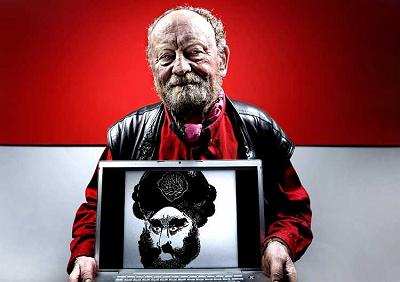 One of the Danish cartoonists, Kurt Westergaard, has received numerous death threats and experienced several murder attempts. As a result, he has to live under constant protection. In January 2010, a Somali Muslim man armed with an axe and knife entered Westergaard’s house and threatened to kill him, shouting phrases like “We will get our revenge!”
One of the Danish cartoonists, Kurt Westergaard, has received numerous death threats and experienced several murder attempts. As a result, he has to live under constant protection. In January 2010, a Somali Muslim man armed with an axe and knife entered Westergaard’s house and threatened to kill him, shouting phrases like “We will get our revenge!”In the early hours of November 2 2011, the offices of the French left-wing satirical political weekly newspaper Charia Hebdo were badly damaged in a firebombing attack. They had just prepared a special edition of the magazine purporting to have Muhammad as a guest editor, running an illustration saying “One hundred whip lashes if you don’t die laughing.”
In response to this attack, Bruce Crumley of Time, the world’s largest weekly news magazine, mocked the insensitivity and Islamophobia of Charlie Hebdo, eessentially arguing that we should simply capitulate in the face of violent intimidation so that thugs won’t hurt us again. As the British political commentator Nick Cohen asked provocatively in The Spectator: Can we torch Time Magazine’s offices now? After all, their own writers apparently believe that violent reactions are understandable if magazines publish something you happen to dislike.
The worst aspect of this and similar episodes is not the Islamic attack on free speech. That was unfortunately to be expected. The most shocking thing is to see how many Westerners themselves now fail to appreciate the fundamental importance of freedom of expression.
The Italian journalist Giulio Meotti writes about Europe’s veil of fear: “Charlie Hebdo is the latest in a series of ‘blasphemous pencils’ – European cartoonists, writers and journalists threatened with death for their criticism about Islam.” They are people who need a level of personal protection inconceivably even in Israel, a country well-known for its attention to security. Flemming Rose was the cultural editor of Jyllands-Posten who took the initiative of publishing the cartoons. When he attended a conference in Oxford, British police had to set up the same protection as for the pop star Michael Jackson.
The office of Geert Wilders lies in the most isolated corner of the Dutch Parliament. It was chosen because potential terrorists can get through only one corridor, which makes it easier to protect him. Even the pencils of visitors are searched. At the University of Leiden, Professor Afshin Ellian has to be protected by bulletproof walls and policemen. “In Holland Rousseau, Locke, Sade and Spinoza were able to publish their books,” Ellian says. The Netherlands was then the hope of Europe. But today, “there is an atmosphere of fear if you criticize Islam.”
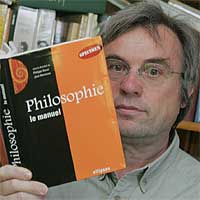 In 2006, the French high-school philosophy teacher Robert Redeker published an op-ed article in Le Figaro newspaper stating that unlike Christianity or Judaism, “Islam is a religion that, in its own sacred text, as well as in its everyday rites, exalts violence and hatred.” He immediately received so many death threats that he had to give up his teaching profession entirely. The message is clear: Say that Islam is a religion of peace, or we’ll kill you.
In 2006, the French high-school philosophy teacher Robert Redeker published an op-ed article in Le Figaro newspaper stating that unlike Christianity or Judaism, “Islam is a religion that, in its own sacred text, as well as in its everyday rites, exalts violence and hatred.” He immediately received so many death threats that he had to give up his teaching profession entirely. The message is clear: Say that Islam is a religion of peace, or we’ll kill you.Redeker is currently living under constant protection in a secret location. He was not even allowed to announce his father’s death because someone could have noted the surname. “I had to bury my father like a criminal,” he laments. The marriage of his daughter was attended by the police as well. “I cannot go out to buy bread or newspapers or for a glass of wine. I cannot walk in the streets. I am a refugee in my own country. I cannot take the train, bus or subway.”
Author Paul Berman describes how Salman Rushdie since 1989 has metastasized into an entire social class, a subset of the European intelligentsia who survive mainly because of bodyguards and safety precautions. 1989 also marked the fall of the Berlin Wall and thereby the liberation of the eastern half of Europe from the shackles of Communism. Many observers then predicted that winds of freedom would sweep across the world. One generation later, a new storm of totalitarianism is brewing in the western half of Europe with Multiculturalism.
The British Prime Minister Winston Churchill in the 1940s talked about an Iron Curtain in Eastern Europe under Communism. Today, an Iron Burka appears to have descended upon Western Europe under Multiculturalism, a veil of fear from Islamic threats and intimidation.











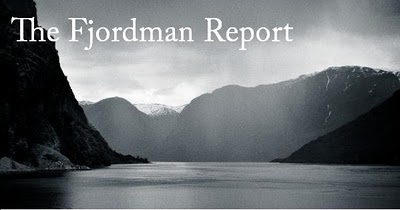
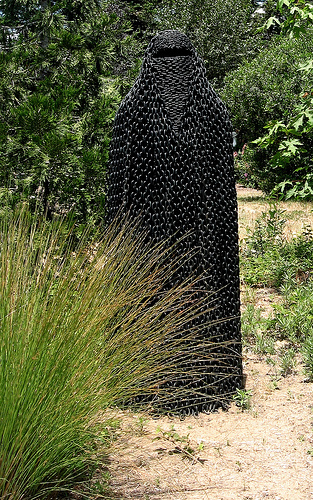
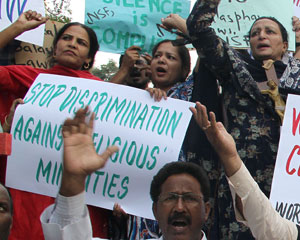

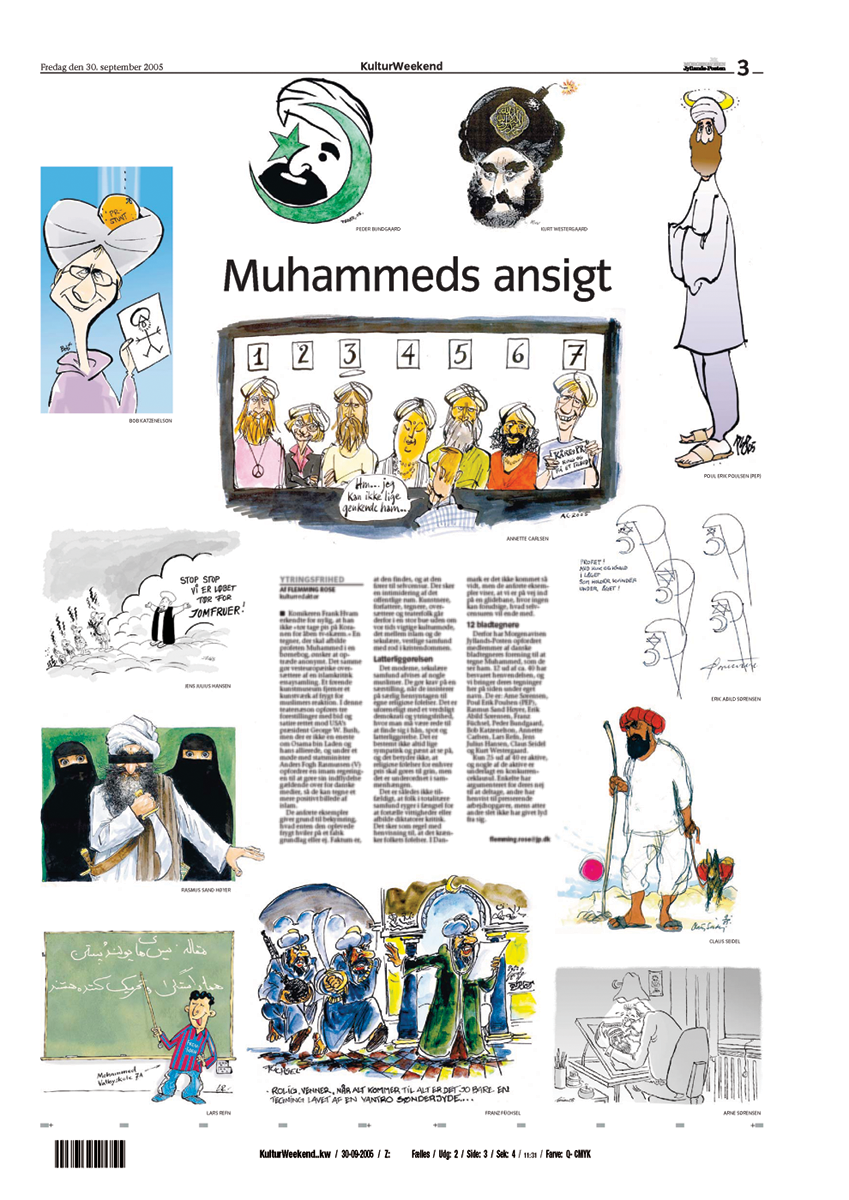

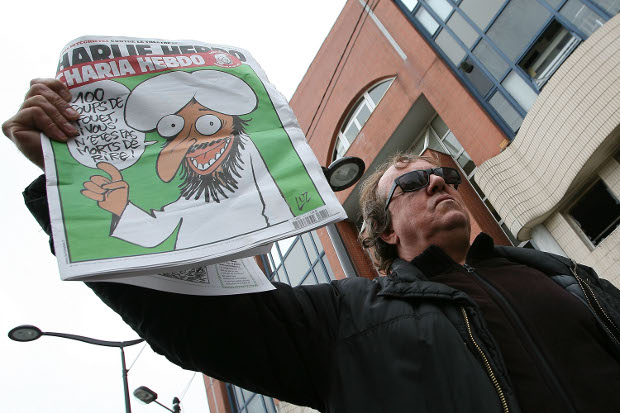


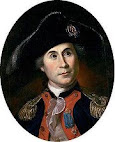







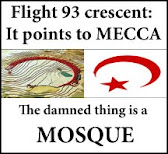







1 Comments - Share Yours!:
If anyone reading this post doesn't know who Robert Redeker is, here is a little background.
Post a Comment